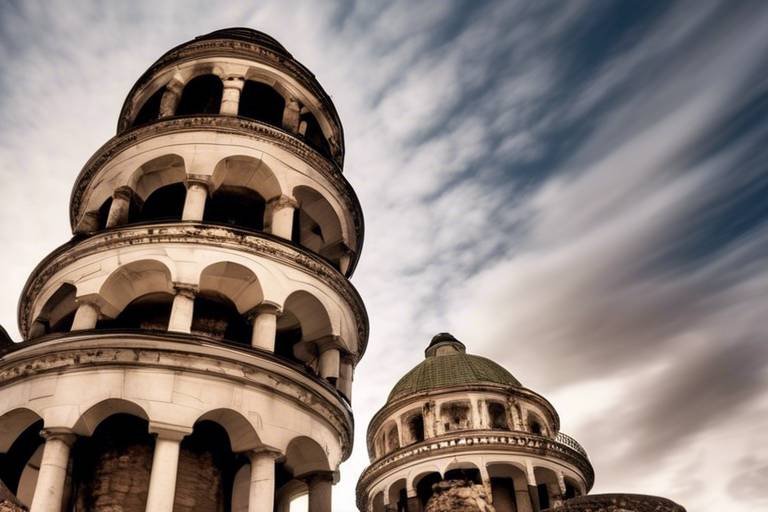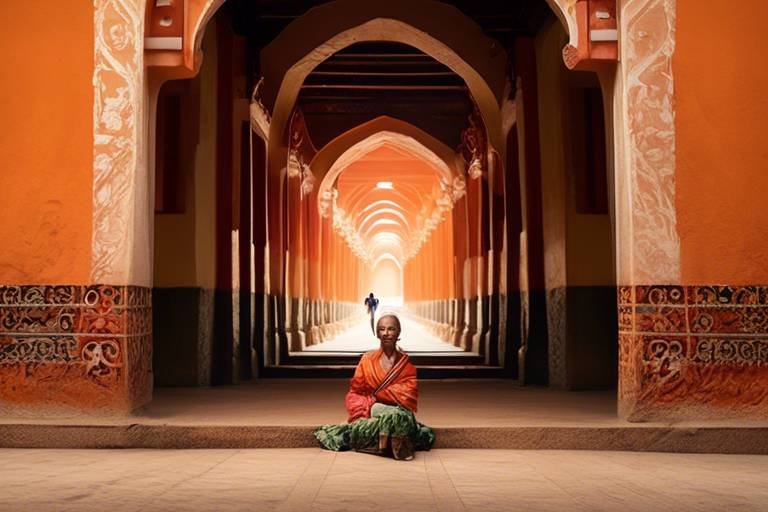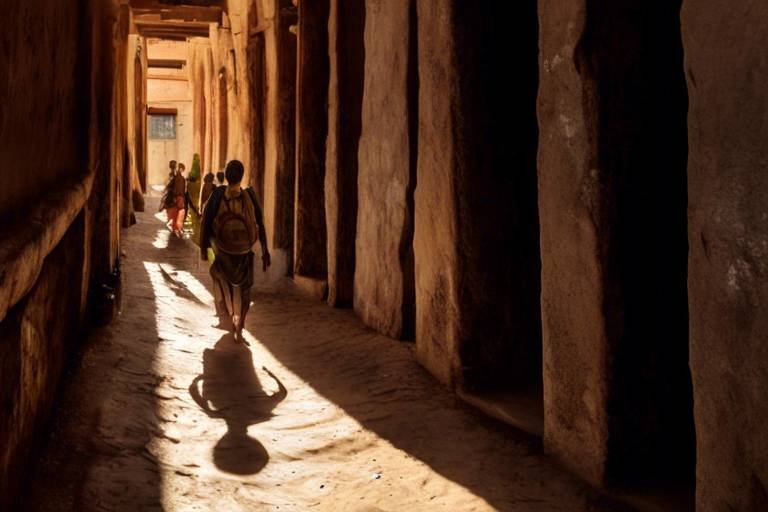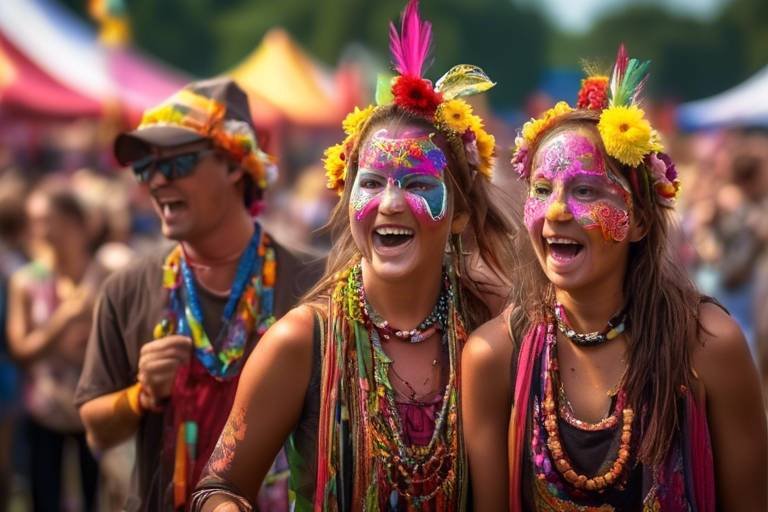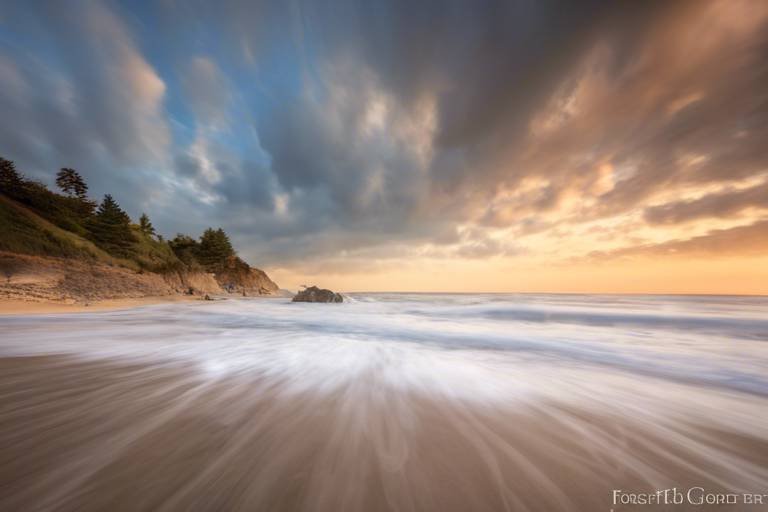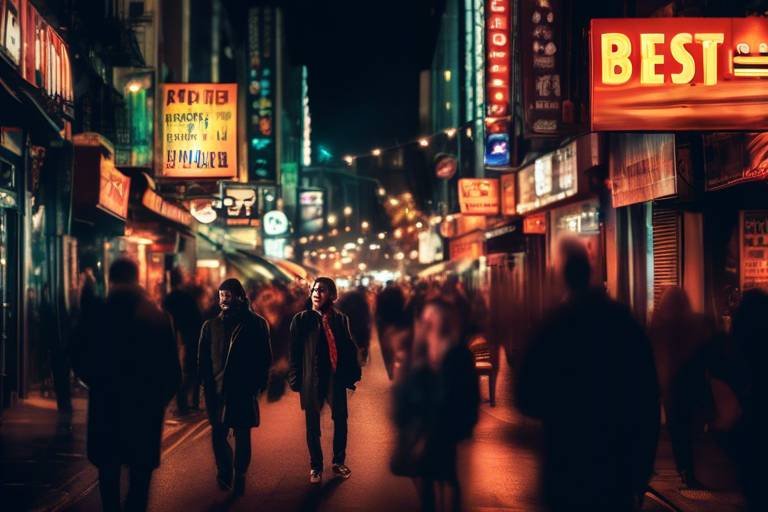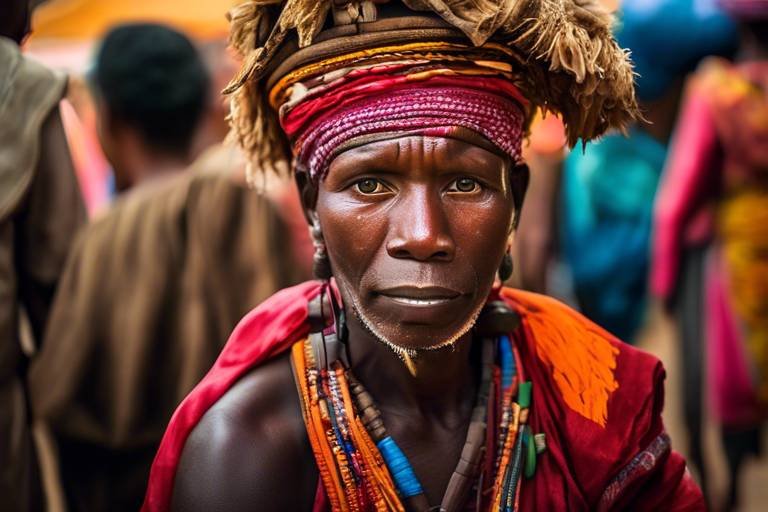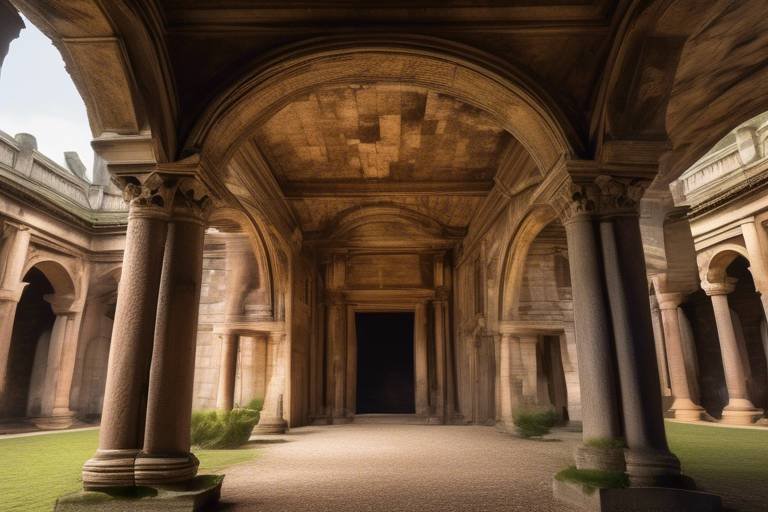Tips for Photographing Historical Monuments with Impact
Photographing historical monuments is a unique opportunity to capture the essence of these iconic landmarks through the lens of your camera. It's a chance to freeze a moment in time and showcase the beauty and significance of these historical treasures. But how can you ensure that your photos truly make an impact and do justice to the grandeur of these monuments?
Researching the monument you plan to photograph is the first step towards creating impactful images. Understanding its history, architectural style, and cultural context will not only deepen your appreciation for the monument but also guide you in capturing its essence in your photographs.
Choosing the right time of day is crucial when it comes to photography. Opting for the soft, warm light of early morning or late afternoon can enhance the monument's beauty and texture, adding a magical quality to your images.
When framing your shots, consider using natural elements like arches or doorways to frame the monument within the composition. Experiment with different angles and perspectives to find the most captivating way to showcase the monument in your photos.
Adding elements like people or objects in the foreground can provide a sense of scale and perspective, emphasizing the monument's grandeur. This technique adds depth to your photos and creates a more immersive viewing experience.
Leading lines are a powerful compositional tool that can guide the viewer's eye towards the focal point of your photograph. Incorporate pathways or fences to create a sense of movement and draw attention to the monument in a dynamic way.
Exploring reflections can add a unique and artistic dimension to your photos. Look for reflective surfaces like water or glass to capture stunning reflections of the monument, creating visually striking images that stand out.
Shadows and silhouettes can create dramatic and evocative images of historical monuments. Experiment with backlighting to capture striking silhouettes against the monument's backdrop, adding a sense of mystery and intrigue to your photos.
Post-processing techniques can further enhance your photographs, allowing you to adjust exposure, contrast, and colors to achieve the desired effect. Consider converting images to black and white for a timeless look that emphasizes the monument's intricate details.
Lastly, focus on capturing the intricate details and textures of the monument itself. Zoom in on carvings, patterns, and weathered surfaces to reveal the craftsmanship and character of the monument in a unique and compelling way.
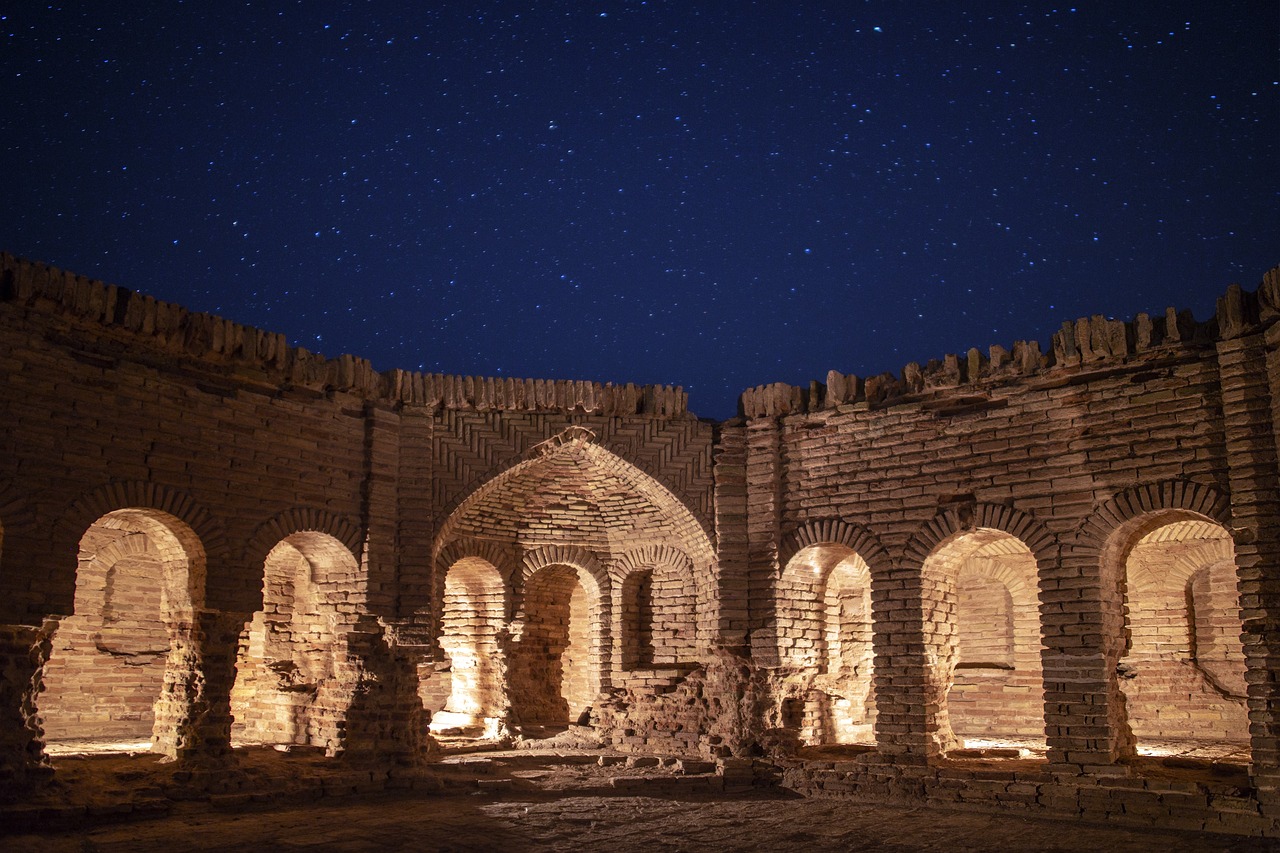
Researching the Monument
When it comes to photographing historical monuments with impact, one of the key elements that can elevate your images is the research you put into understanding the monument itself. Before you even pick up your camera, take the time to delve into the history and significance of the monument you are capturing. By understanding its architectural style, cultural context, and unique features, you will be better equipped to showcase its essence through your photographs.
Imagine yourself as a detective uncovering the hidden stories and secrets that the monument holds. This knowledge will not only inform your composition choices but also add depth and meaning to your images. Researching the monument beforehand allows you to approach your photography with a newfound appreciation and respect for the historical significance it represents.
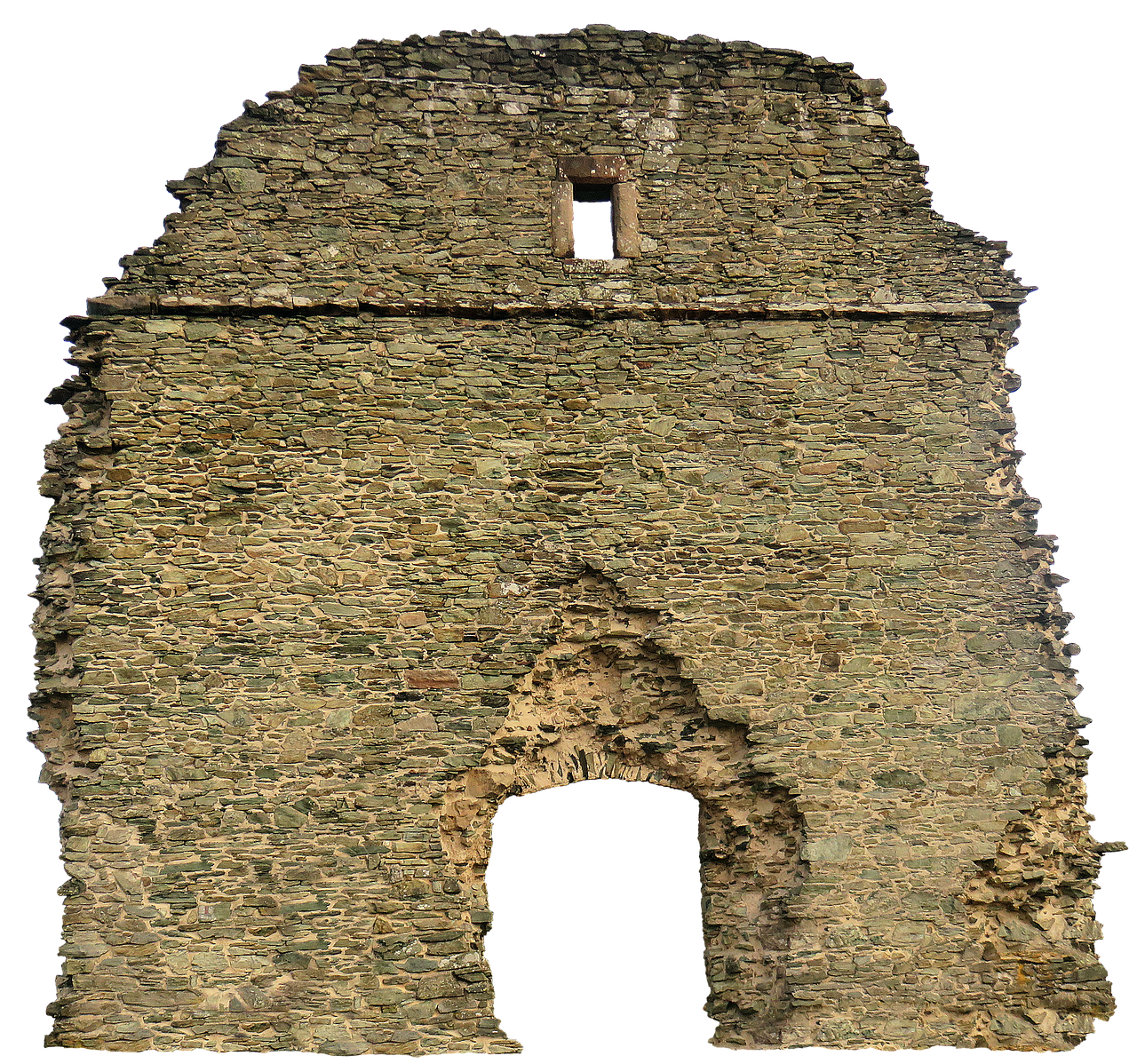
Choosing the Right Time of Day
When it comes to photographing historical monuments, choosing the right time of day is crucial in capturing the essence and beauty of these landmarks. The quality of light can make a significant difference in the final outcome of your photos. Opting for early morning or late afternoon light can create soft, warm tones that enhance the monument's textures and details. The gentle light during these times can add a touch of magic to your images, bringing out the intricate features of the monument in a captivating way.
Imagine the soft glow of the rising sun casting a warm hue over an ancient temple, or the golden light of sunset painting a majestic castle in a dreamy light. These moments of the day can elevate your photographs, giving them a timeless and enchanting quality that truly captures the spirit of the monument. By being mindful of the time of day you shoot, you can infuse your images with a sense of atmosphere and emotion that resonates with viewers.
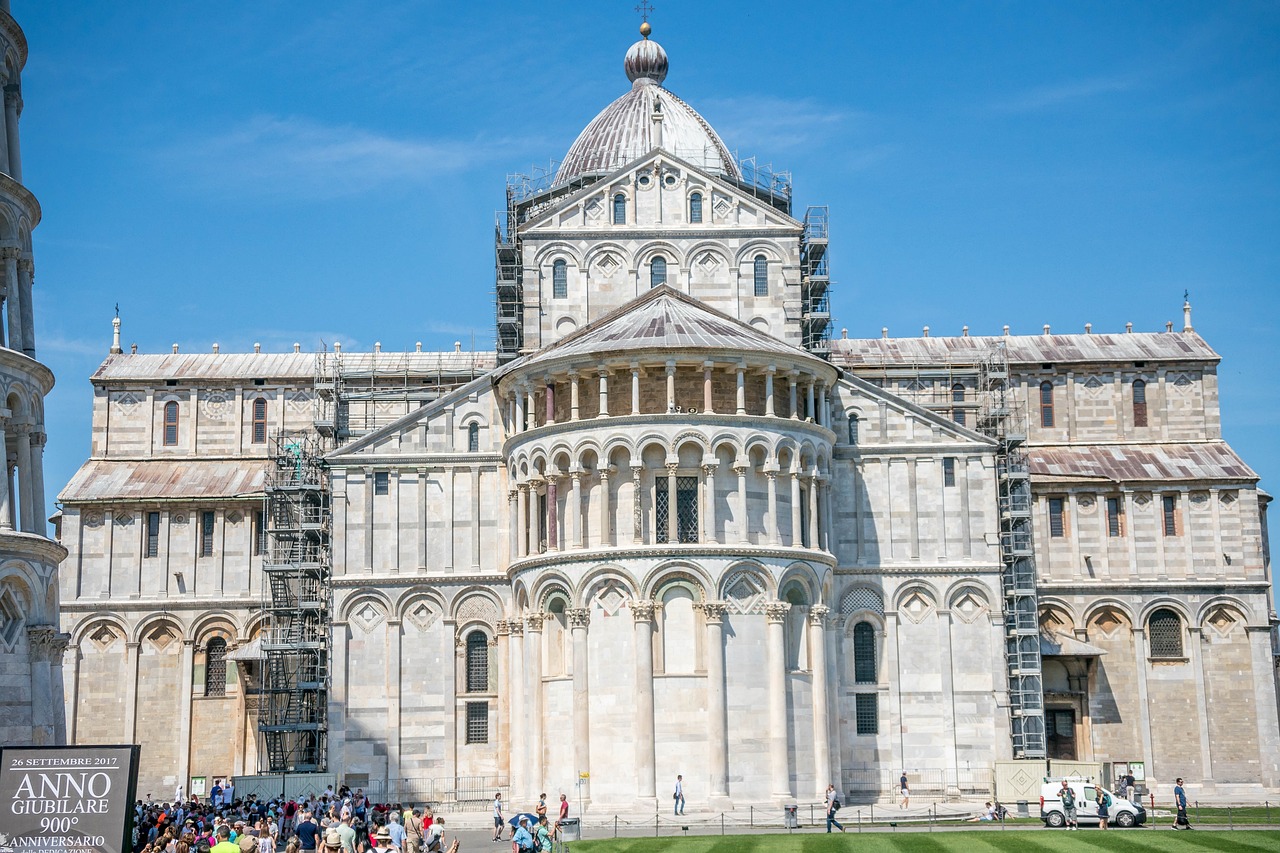
Framing and Composition Techniques
When it comes to photographing historical monuments, framing and composition techniques are essential to create impactful and visually striking images. The way you frame your shot and compose the elements within the frame can make a significant difference in the final result. By utilizing various techniques, you can enhance the beauty and significance of the monument in your photographs.
One effective framing technique is to use architectural elements such as arches or doorways to naturally frame the monument within your shot. This not only adds a sense of depth and dimension to the image but also draws the viewer's eye towards the main subject. Experimenting with different angles and perspectives can help you find the most compelling composition that highlights the monument's unique features.
Consider the rule of thirds when framing your shots, dividing the frame into a grid of nine equal sections. By placing the monument or key elements along these gridlines or at the points where they intersect, you can create a well-balanced and visually appealing composition. This technique can help you create a sense of harmony and balance in your photographs.
Another aspect to consider is the use of leading lines to guide the viewer's eye towards the monument. Leading lines can be natural elements like pathways, roads, or fences that direct attention towards the focal point of the image. By incorporating these lines strategically, you can create a sense of movement and flow within the composition, enhancing the overall impact of the photograph.
Experiment with framing and composition techniques to add visual interest and storytelling elements to your photos. Whether you choose to frame the monument within a natural archway or use leading lines to create a sense of direction, these techniques can help you capture the essence and beauty of historical monuments in a compelling way.

Playing with Scale and Perspective
When it comes to photographing historical monuments, playing with scale and perspective can truly elevate your images to the next level. By incorporating elements like people or objects in the foreground, you not only provide a sense of scale but also add depth and context to your photos. Imagine capturing a majestic castle with a tiny figure in the foreground, emphasizing the monument's grandeur and immensity. This technique allows viewers to appreciate the monument's size and significance in a more tangible way.
Experimenting with different perspectives can also offer a fresh take on familiar monuments. Instead of capturing the entire structure in one shot, try getting up close to highlight intricate details or shoot from a low angle to emphasize its height and grandeur. Playing with perspective allows you to showcase the monument in a unique light, revealing aspects that are often overlooked in standard photographs.
Consider the impact of juxtaposition when playing with scale and perspective. By placing smaller objects or individuals in the frame alongside the monument, you create a visual contrast that adds interest and narrative to your photos. This technique can evoke a sense of history and storytelling, making your images more engaging and thought-provoking.
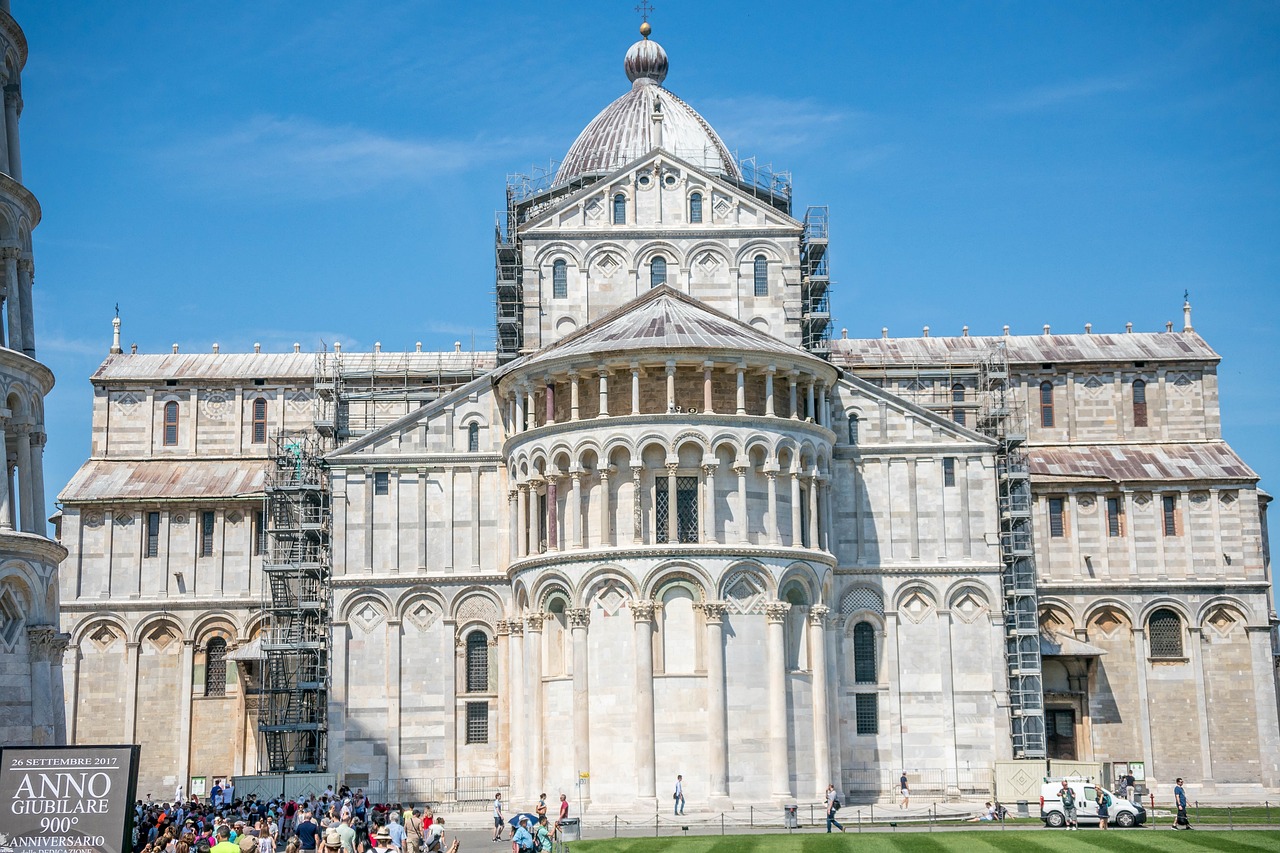
Utilizing Leading Lines
When it comes to photographing historical monuments, utilizing leading lines can significantly enhance the visual impact of your images. These lines serve as a powerful compositional tool, guiding the viewer's gaze towards the focal point of the photograph - the monument itself.
Imagine a pathway leading directly to the grand entrance of a historical castle or a row of trees framing a majestic monument in the distance. These leading lines not only add depth and dimension to your photos but also create a sense of movement, drawing the viewer deeper into the scene.
Experiment with different types of leading lines, such as fences, roads, or even natural elements like rivers or cliffs, to see how they can enhance the composition of your photographs. By strategically incorporating leading lines into your shots, you can create visually captivating images that truly capture the essence and grandeur of historical landmarks.
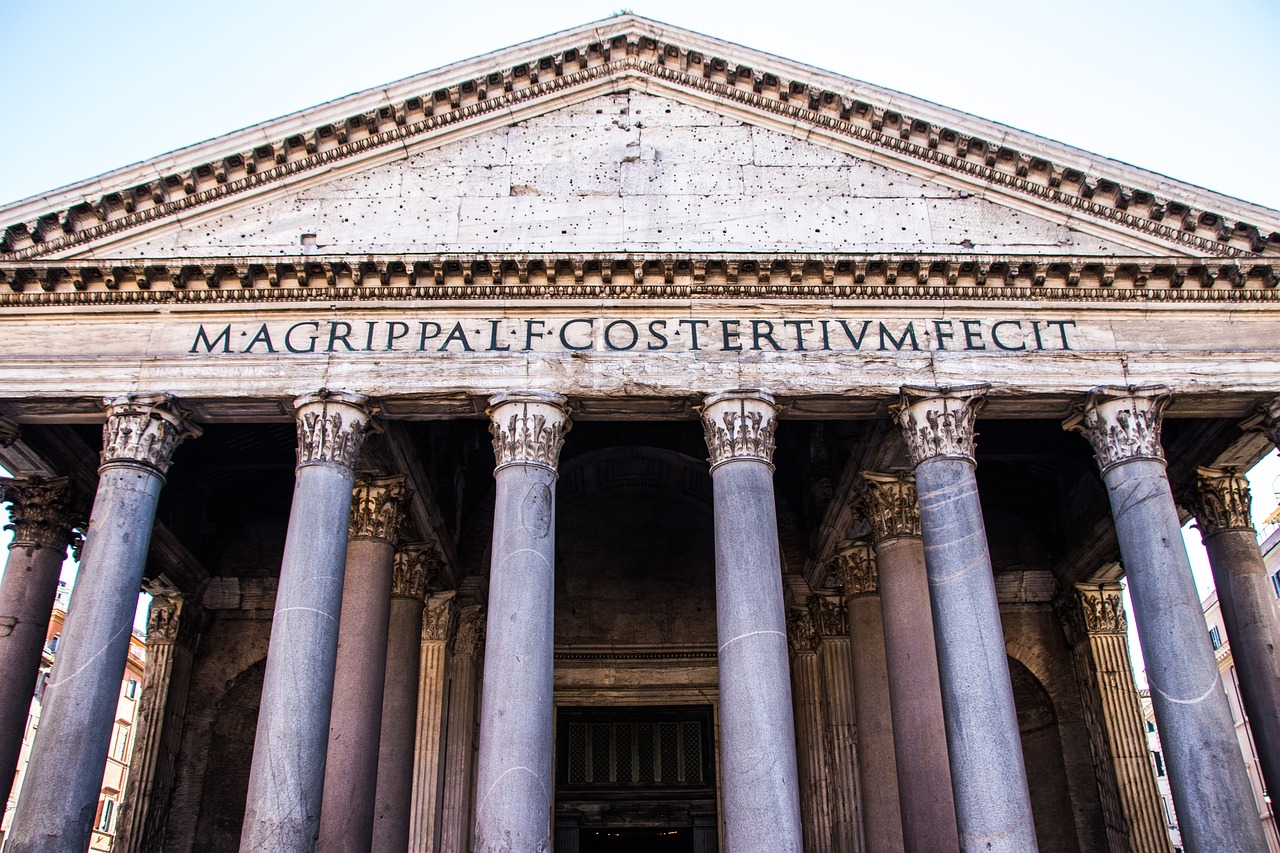
Experimenting with Reflections
Experimenting with reflections can elevate your photographs of historical monuments to a whole new level of artistry. By incorporating reflective surfaces like water or glass into your compositions, you can add a touch of magic and create visually stunning images that captivate viewers.
When photographing a historical monument, look for opportunities to capture reflections that mirror the monument's grandeur and beauty. Water bodies, such as ponds or fountains, can serve as perfect canvases for reflecting the monument, creating a mesmerizing effect that enhances the overall composition.
Additionally, glass surfaces, like windows or mirrors, can provide intriguing reflections that add depth and complexity to your photos. Experiment with different angles and distances to find the most captivating reflections that complement the monument's architecture and design.
Reflections not only add visual interest to your photographs but also convey a sense of timelessness and mystery. They create a dynamic interplay between the monument and its surroundings, blurring the lines between reality and illusion, inviting viewers to explore the image more deeply.
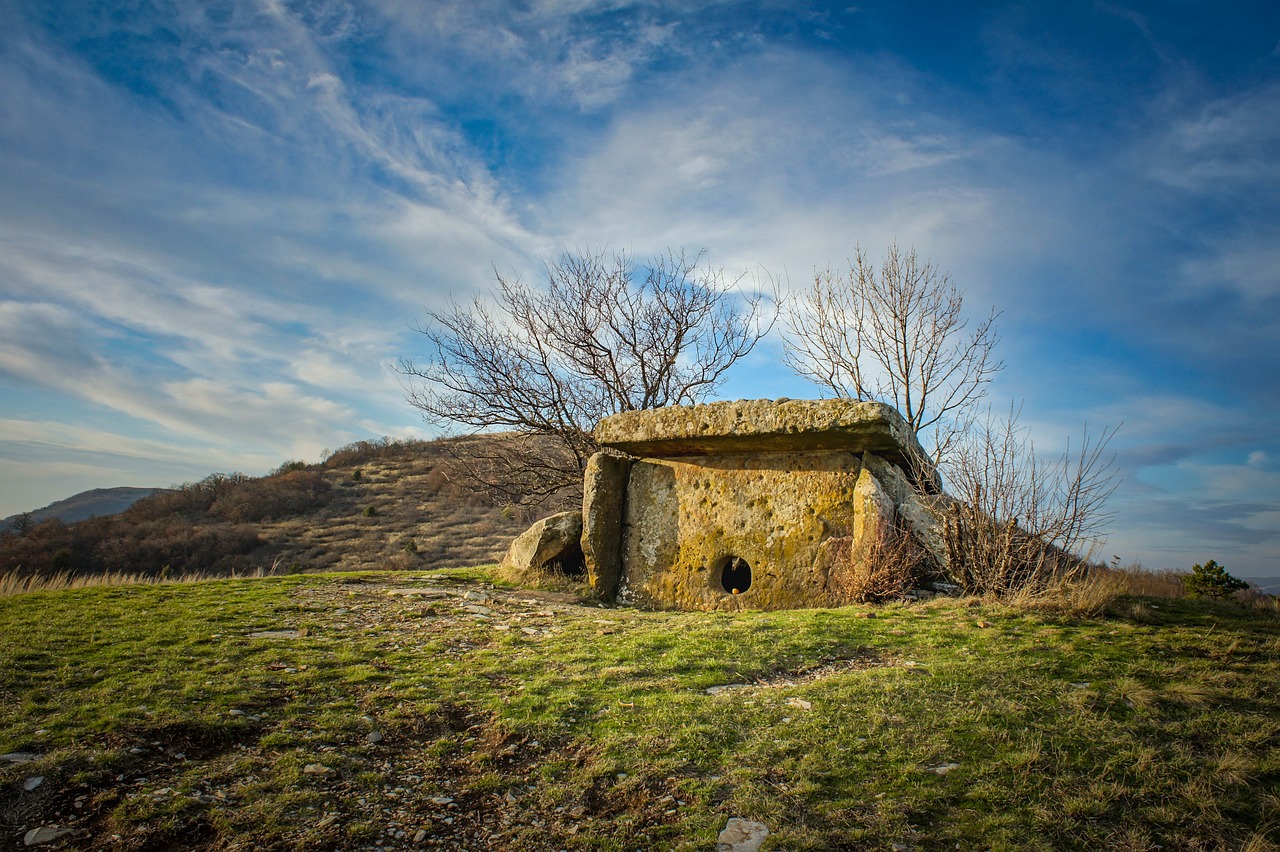
Embracing Shadows and Silhouettes
When it comes to photographing historical monuments, embracing shadows and silhouettes can add a whole new dimension to your images. Shadows can create a sense of mystery and drama, while silhouettes can evoke emotions and tell a story without revealing all the details. By playing with light and darkness, you can capture the essence of a monument in a unique and artistic way.
Imagine the silhouette of a majestic castle against a fiery sunset, or the intricate patterns of a monument's shadow cast on the ground. These elements can create striking visual effects that enhance the mood and atmosphere of your photographs. Embracing shadows and silhouettes allows you to explore the interplay between light and dark, adding depth and intrigue to your composition.
One technique to experiment with is backlighting, where the light source is positioned behind the monument, creating a strong contrast between the illuminated structure and the dark background. This technique can highlight the silhouette of the monument, emphasizing its shape and details in a captivating way.
Another approach is to incorporate shadows creatively into your composition. By positioning yourself in such a way that the monument casts interesting shadows on the surrounding environment, you can create dynamic and visually engaging images. Shadows can add a sense of movement and depth to your photos, drawing the viewer's eye towards the monument.
Embracing shadows and silhouettes in your photography requires a keen eye for light and shadow play. It's about capturing the essence and mood of a historical monument in a way that goes beyond the literal representation. By harnessing the power of shadows and silhouettes, you can create evocative and memorable images that leave a lasting impact on the viewer.
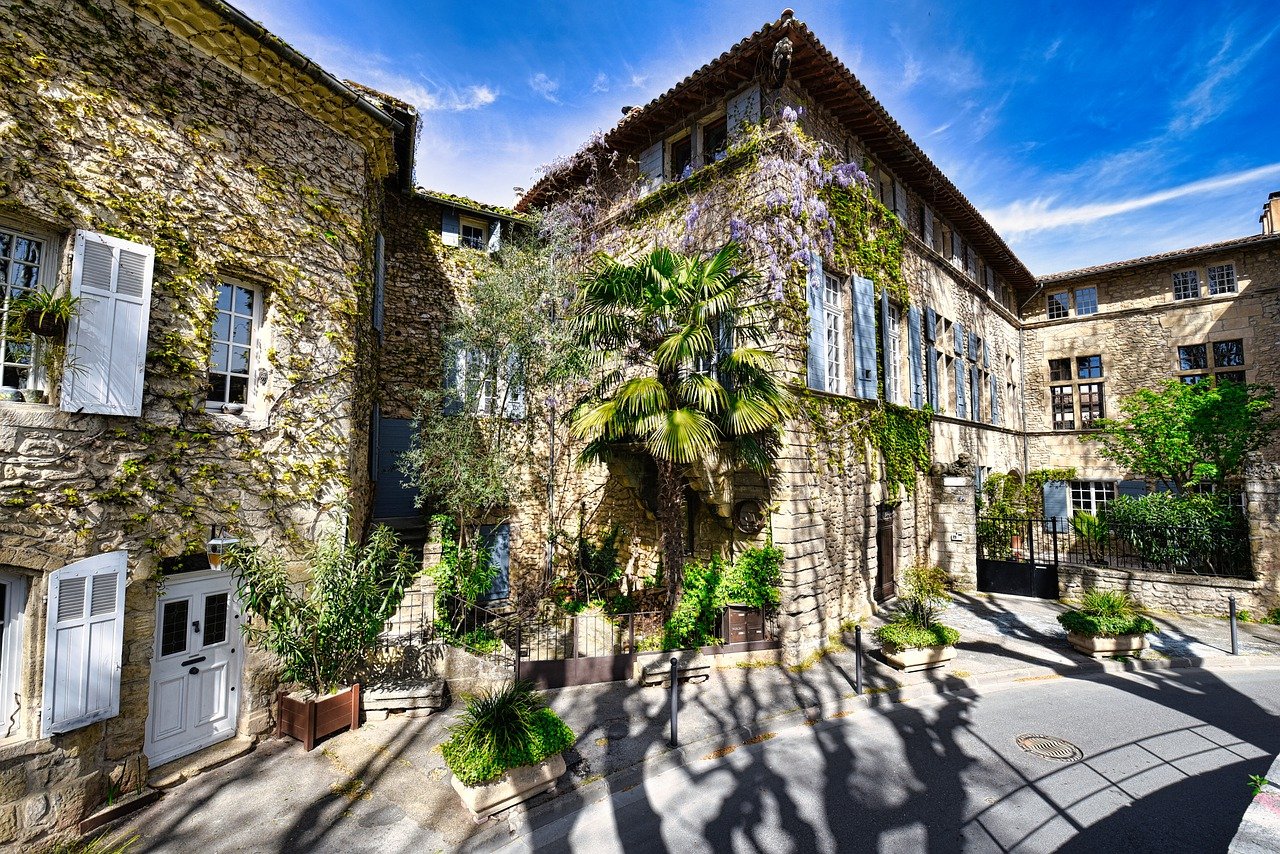
Post-Processing Techniques
Post-processing plays a significant role in enhancing the impact of your photographs of historical monuments. By utilizing various editing tools and techniques, you can refine and elevate your images to truly capture the essence and beauty of these landmarks.
One essential post-processing technique is adjusting the exposure levels of your photos. Correcting exposure can help balance the light and dark areas in the image, ensuring that the monument stands out prominently without losing important details.
Another crucial aspect is fine-tuning the contrast to make the monument pop in the photograph. By adjusting the contrast levels, you can enhance the details and textures of the monument, creating a more dynamic and visually appealing image.
Color correction is also key in post-processing. By adjusting the colors in your photos, you can bring out the true hues of the monument and create a more vibrant and engaging final image. Experimenting with color tones can evoke different moods and enhance the overall impact of your photograph.
Furthermore, consider converting your images to black and white during post-processing. This classic technique can add a timeless and artistic quality to your photos, emphasizing the intricate details and architectural features of the monument in a unique way.
Lastly, don't overlook the importance of cropping and straightening your photos. By refining the composition through cropping and adjusting the angles, you can draw the viewer's focus towards the monument and create a more visually pleasing final result.
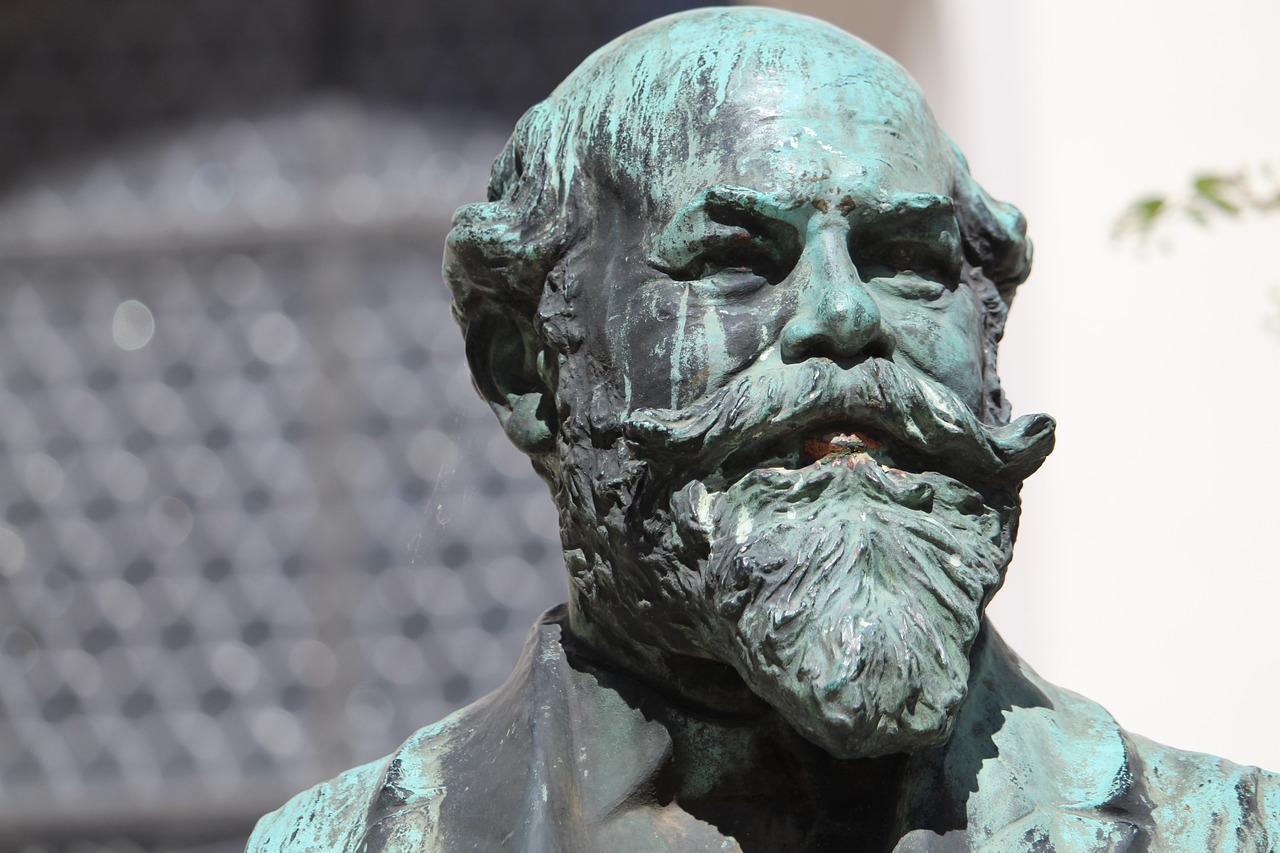
Capturing Details and Textures
When it comes to photographing historical monuments, capturing the intricate details and textures is essential to showcase the craftsmanship and character of these iconic structures. By focusing on the finer elements, such as carvings, patterns, and weathered surfaces, you can bring out the unique essence of the monument in your images.
One effective technique for capturing details is to use a macro lens to zoom in on specific features of the monument. This allows you to highlight the intricate carvings or textures that may go unnoticed in wider shots. Additionally, experimenting with different angles and perspectives can reveal new details and create visually engaging compositions.
Consider the play of light and shadow on the monument's surfaces to add depth and dimension to your photos. Shadows can enhance textures and create a sense of drama, while soft lighting can accentuate delicate details. By paying attention to these nuances, you can create images that truly capture the essence of the monument.
Another way to emphasize details is through close-up shots that focus on specific elements of the monument. Whether it's a unique architectural feature or a decorative motif, zooming in on these details can provide a fresh perspective and highlight the craftsmanship behind the monument's construction.
Furthermore, incorporating textures into your compositions can add visual interest and tactile appeal to your photos. From the rough stone surfaces of ancient ruins to the intricate patterns of ornate facades, textures can evoke a sense of history and authenticity in your images.
Frequently Asked Questions
- What camera equipment is best for photographing historical monuments?
When photographing historical monuments, it's recommended to use a camera with manual settings to have full control over exposure and focus. A wide-angle lens can help capture the grandeur of the monument and its surroundings.
- How can I deal with crowds when photographing popular historical sites?
To minimize the impact of crowds in your photos, visit the monument during off-peak hours or use techniques like long exposures to blur out moving people. Patience and strategic framing can also help in capturing clean shots.
- Is it necessary to seek permission to photograph historical monuments?
It's crucial to check the rules and regulations of the specific monument or location you plan to photograph. Some sites may require permission or have restrictions on the use of tripods or commercial photography.
- How can I protect my camera gear when shooting in challenging weather conditions?
Investing in weather-sealed camera equipment and carrying protective gear like rain covers and lens hoods can safeguard your gear from adverse weather conditions. Additionally, storing your gear in a dry bag when not in use can prevent moisture damage.

